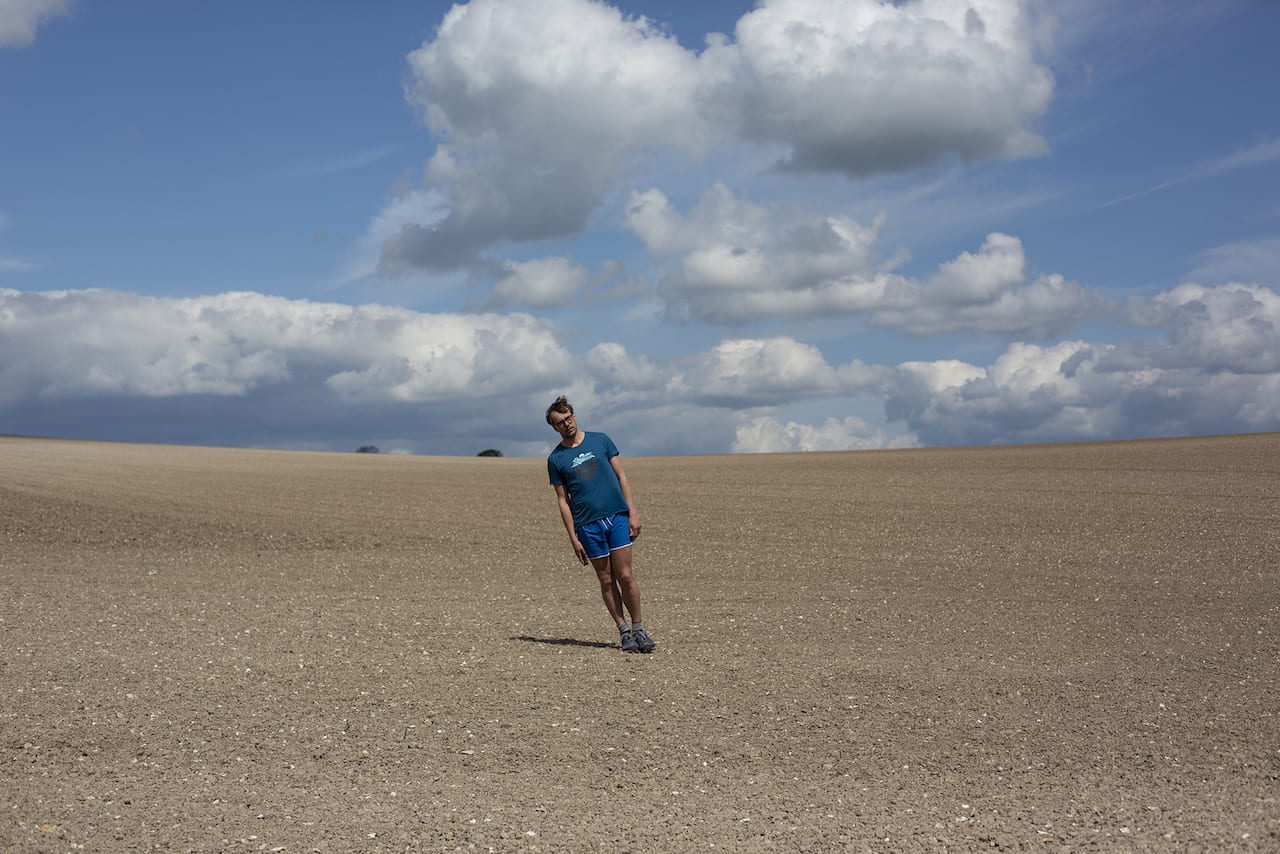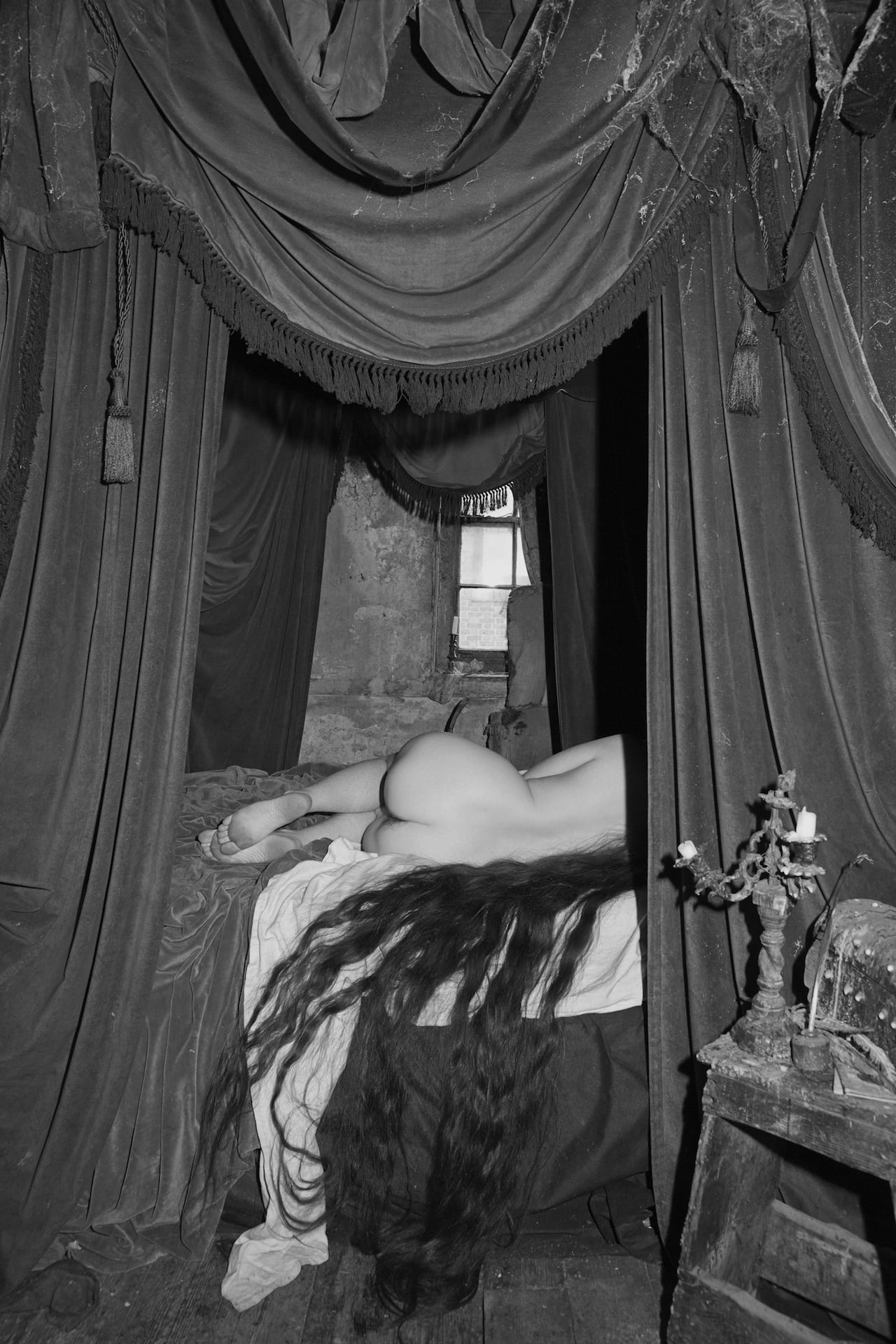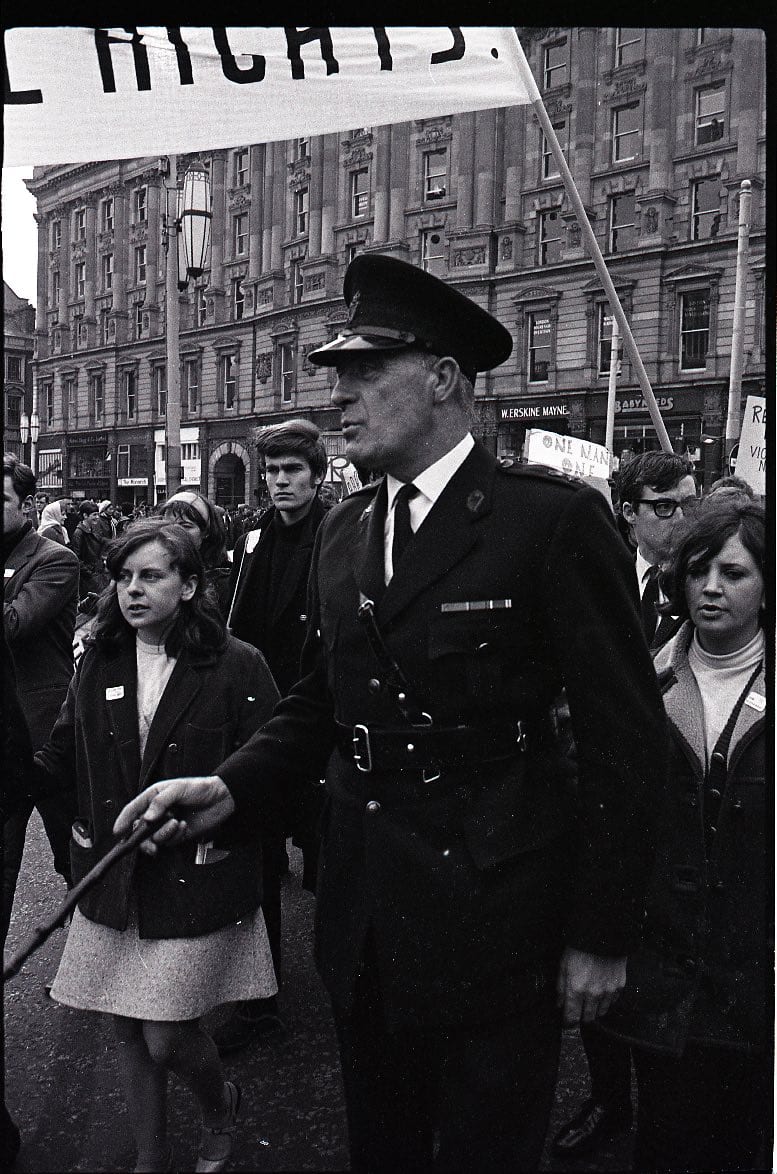Kensuke Koike’s Instagram page
Kensuke Koike’s deconstructed passport portraits were on show at Approche, a space on Rue de Richelieu devoted to young conceptual photographers during Paris Photo. Using raw material found by vernacular archivist, Thomas Sauvin, Koike meticulously creates surreal collaged faces by punching holes in the portraits or slicing them into strips or circles, then painstakingly reassembling them. Nothing is added and nothing subtracted. The precision alone is breathtaking and the results surreal. His book, No More, No Less, was published simultaneously in three different editions from SKINNERBOOX, TheM editions and Jiazazhi Press/Library.
Annegret Soltau
Seventies feminist artist, Annegret Soltau, uses thread to bind her face and makes composite portraits from stitched together fragments of black and white prints. The results are mesmerising and provocative in their often visceral exploration of female identity and psychology.

Michal Iwanowski’s Go Home, Polish
On April 27, Michel Iwanoski swet off from his adopted home in Cardiff to walk back to his family home in the village of Mokrzeszów in Poland, having been haunted for several years by graffiti he spotted on a wall in his Roath neighbourhood that read “Go Home, Polish”. His dogged 1,200 mile journey, mapped out in regular Instagram photographs that merged various approaches – diaristic, documentary, staged, conceptual – was by turns funny, revealing and marked by moments of drama amid the drudgery. When I asked him if the journey changed his way of thinking about home, he replied, “It confirmed something. I feel utterly at home walking in the landscape, wherever that landscape is. I don’t need to be told by a government, ‘This is your home.’ The ground beneath my feet sanctifies my belonging in this world – not the passport given to me by a country.” Amen to that.
Tereza Zelenkova: The Essential Solitude
Tereza Zelenkova continued her visual and psychological exploration of place, myth and imagination with this evocative series shot in Dennis Severs’ House in Spitalfields, east, London, where visitors can experience an eerie similacrum of early 18th century Hugenot life. Since her early project, The Absence of Myth, which referenced the writings of Freud, Rimbaud and Bataille, Zelenkova has mapped out a singular place for herself in contemporay photography. In this instance, Comte de Lautréamont’s extended prose poem, Les Chants de Maldoror is the the conceptual starting point for a visual exploration of solitude, creativity and dreamspace. The result is haunting in every sense of the word.

Buzz Logan’s early photographs of the Northern Irish Civil Rights’ movement
I hadn’t heard of Buzz Logan until he was brought to my attention by Trish Lambe, co-director of the Gallery of Photography, Ireland, where, in September, I curated an exhibition called The Lost Moment – Civil Rights, Street Protest and Resistance in Northern Ireland, 1968-69. Logan’s evocative series of one of the earliest student protest marches in Belfast in 1968 is a gem of quiet reportage, capturing a idealistic moment before the violence of Troubles began. Many photographs feature a young Bernadette Devlin, who, the following year, would become the youngest MP to be elected to Westminster. The youthful optimism is countered by images of jeering Loyalists and one oddly chilling photograph of a young boy aiming a toy rifle at the marchers as they pass by his street. A glimpse of a brief moment of hope before the long darkness descended on the streets of Belfast.

Raoul Hausmann: Vision in Action, Jeu de Paume, Paris
I wandered into this show after a few hours in the Susan Meiselas retrospective at Jeu de Paume and it blew me away. Perhaps best known for his combative collages and photomontages, Austrian born Dadaist, Raoul Hausmann, also left behind a huge archive of photographs. This illuminating exhibition, curated by Cecile Bargues, comprised 130 vintage prints made in the years after he was forced to flee Berlin by the Nazis. Ranging from his modernist studies of vernacular houses in Ibiza to sensuous sun-kissed nudes and abstract natural still lifes of sea foam, seaweed and wheatfields, the show was a series of quiet surprises that illuminated the ways in which a once-angry avant-gardist had finally made peace with the world in his years of exile.

Andrew Moisey’s The American Fraternity: An Illustrated Ritual Manual, published by Daylight Books
Modelled on an old college fraternity manual, Andrew Mosiey’s chilling photobook lays bare the culture of misogyny, racism and unquestioning loyalty that to an alarming degree still defines fratboy life on American campuses. Merging his own photographs, many shot in low light during initiation rituals, and pages from the original handbook, The American Fraternity is also a glimpse of an enclosed world of male privilege that underpins the highest bastions of American power, from the Supreme Court to the White House. A timely, politically-charged and beautifully complex photobook that is an art object in itself.
